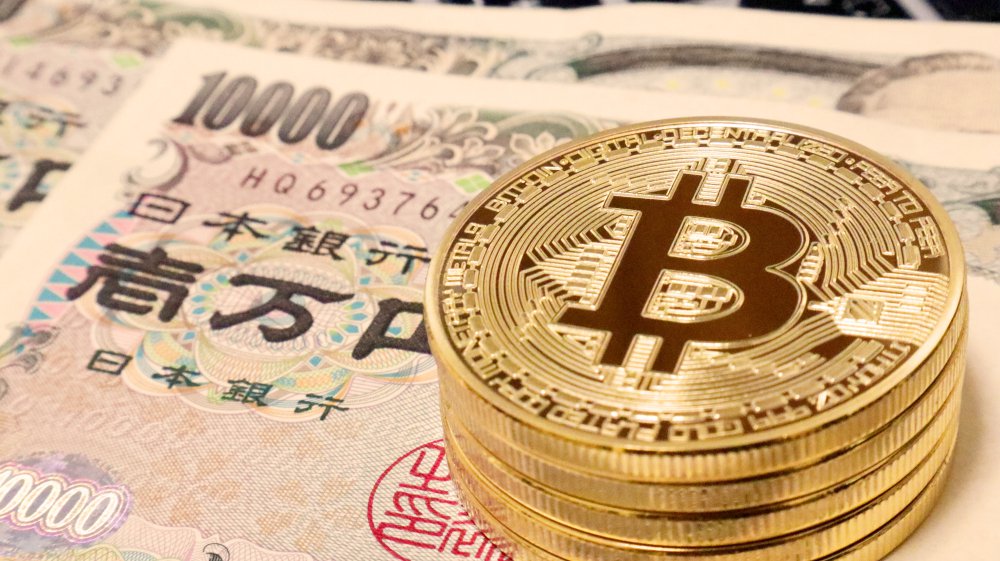Banks Are Toast but Crypto Has Lost Its Soul
(Oli Scarff/Getty Images)
Frances Coppola, a CoinDesk columnist, is a freelance writer and speaker on banking, finance and economics. Her book “The Case for People’s Quantitative Easing” explains how modern money creation and quantitative easing work, and advocates “helicopter money” to help economies out of recession.
The 2008 financial crisis created an extraordinary financial melting pot. Into the soup went the legacy system, now shown to be unfit for this purpose: new ways of transacting in old currencies and new types of money. This witches’ brew has now been stewing for over a decade, but the type of potion it will eventually produce is still unknown. Will it be a financial system fit for the digital age? Or will it simply be a souped-up version of the old system, with all its flaws and toxicity?
The immediate response to the 2008 crisis was to tie down the banks that had so nearly blown up the world. New rules were created to restrict their activities. New regulators were created to police their activities and prevent them doing anything that looked too risky. New capital and liquidity requirements were imposed on them so they were less likely to run out of money in a crisis and, if they did, less likely to need bailing out by taxpayers.
But preventing banks from crashing the financial system and wrecking sovereign finances didn’t necessarily mean making them safer for their customers. In 2014, the government of Cyprus, egged on by the International Monetary Fund and the European Central Bank, imposed losses of more than 50% on uninsured bank deposits in the island’s two largest banks. The shockwave from this reverberates around the world to this day.
The financial crisis had been destructive, yes, but depositors had been protected: The U.S. government had temporarily removed the limit on FDIC deposit insurance, and governments in other countries had guaranteed all deposits in failing banks. But after the Cyprus haircuts, bank deposits were no longer safe. And it wasn’t just large deposits that were suddenly at risk. The Cypriot government originally intended to impose losses on smaller deposits – deposits that were supposedly 100% guaranteed. Fortunately, the Cypriot Parliament had the sense to refuse to pass the legislation. But what is to stop the government of another country, one with a more compliant legislature, from reneging on deposit insurance?
While European governments were busy making bank deposits less safe, central banks were preventing depositors from earning anything. Interest rates were cut to nearly zero at the time of the financial crisis. Twelve years later, they are still nearly zero. At the time of writing, the average interest rate on U.S. bank savings accounts is 0.06%. So central banks are chasing a target of 2% price inflation while keeping the return on savings at close to zero. You’re being robbed, folks.
The financial crisis was the banking equivalent of the asteroid that killed the big dinosaurs.
The effect of all this was to give impetus to new providers. The burgeoning fintech sector offered higher-yield savings accounts to bank depositors desperate for return. But even these are only offering an average yield of about 1%. If you want better than that, you have to look elsewhere.
And you don’t have far to look. The cryptocurrency marketplace offers yields of hundreds and thousands of percent for people who are willing to risk it. Freed from the regulation that prevents banks, and even new fintech providers, from taking the risks that are necessary for high returns, the cryptocurrency has become the go-to place for tech-savvy people who want to make a lot of dollars.
But in becoming a high-risk, high-yield playground for dollar investors, the cryptocurrency world sold its soul. The early adopters of Bitcoin believed it would replace the financial system that had crashed and burned so badly. And today there are still people who believe bitcoin will become the new “gold” in a global cryptocurrency system that will eventually replace the dollar for international transactions.
But most people now playing in the crypto shark pool aren’t interested in world domination. Bitcoin replacing the dollar as the global reserve currency would seriously interfere with their plans to become dollar billionaires through crypto trading. What they want is cryptocurrencies to be securely tethered to the major fiat currencies, especially the dollar, so they can be confident that when they have made their billions of notional dollars, they will be able to convert them to real ones. So now we have “stablecoins” to protect them from the extreme volatility in cryptocurrency prices that can, in a heartbeat, wipe out their notional dollar returns.
“Stablecoins” such as tether are the ropes that tie the cryptocurrency system firmly to the fiat currency system. And even though everyone knows stablecoins aren’t dollars and the guarantees provided by stablecoin issuers are no more reliable than the deposit insurance guarantees provided by governments, these ropes are getting ever stronger.
As investors’ confidence in the dollar backing of the cryptocurrency ecosystem grows, the risks they are prepared to take in search of yield increase. “Yield farming” is all the rage. True, you might get scammed and lose your shirt – indeed as more sharks enter the pool, the likelihood of this happening is rising fast. But there will be plenty more opportunities to make megabucks.
So what began as a simple transaction system independent of the dollar has evolved into a complex ecosystem backed by billions of faux dollars in which the chances of getting defrauded are high but the returns for the lucky – or the fraudulent – are even higher. It even now features cryptocurrency versions of the toxic derivatives that trashed the global economy in 2008. Whatever Satoshi’s vision for Bitcoin was, I doubt if it was this.
Depressing though I find this digital version of the Devonian ocean, there is still hope. The bloodthirsty monsters that roamed that ocean drove some creatures onto the land, where they became the ancestors of today’s land-living vertebrates. Eventually the monsters died out, apparently because of competition from something that wasn’t even in the ocean. Their nemesis was trees, which fundamentally changed the global climate, making it impossible for them to survive.
What will be the nemesis of the cryptocurrency monsters? Perhaps it could be the quiet growth of digital money transmission services. Or maybe the – now inevitable – introduction of central bank digital currencies (CBDCs). Perhaps some cryptocurrency providers will tether to CBDCs instead of relying on the faux dollars created by tether and its kind. It’s hard to say how this will evolve.
The death of the cryptocurrency monsters, when it comes, won’t mean the end of cryptocurrencies. When monsters die, the smaller things on which they preyed become free to grow and develop. Like the Devonian vertebrates, cryptocurrencies may evolve into new forms but they are here to stay. They will become a familiar and vital part of tomorrow’s global financial system.
Conversely, traditional banks do seem to be on their way out. The financial crisis was the banking equivalent of the asteroid that killed the big dinosaurs. Ever since, they have bumped along the bottom in terms of profitability while failing to develop the services or deliver the returns their customers want.
I cannot see a future in which banks as we know them now still exist. But they, too, might evolve into something different. After all, though the big dinosaurs are long gone, dinosaurs are still with us today. We know them now as birds.
Disclosure
The leader in blockchain news, CoinDesk is a media outlet that strives for the highest journalistic standards and abides by a strict set of editorial policies. CoinDesk is an independent operating subsidiary of Digital Currency Group, which invests in cryptocurrencies and blockchain startups.









